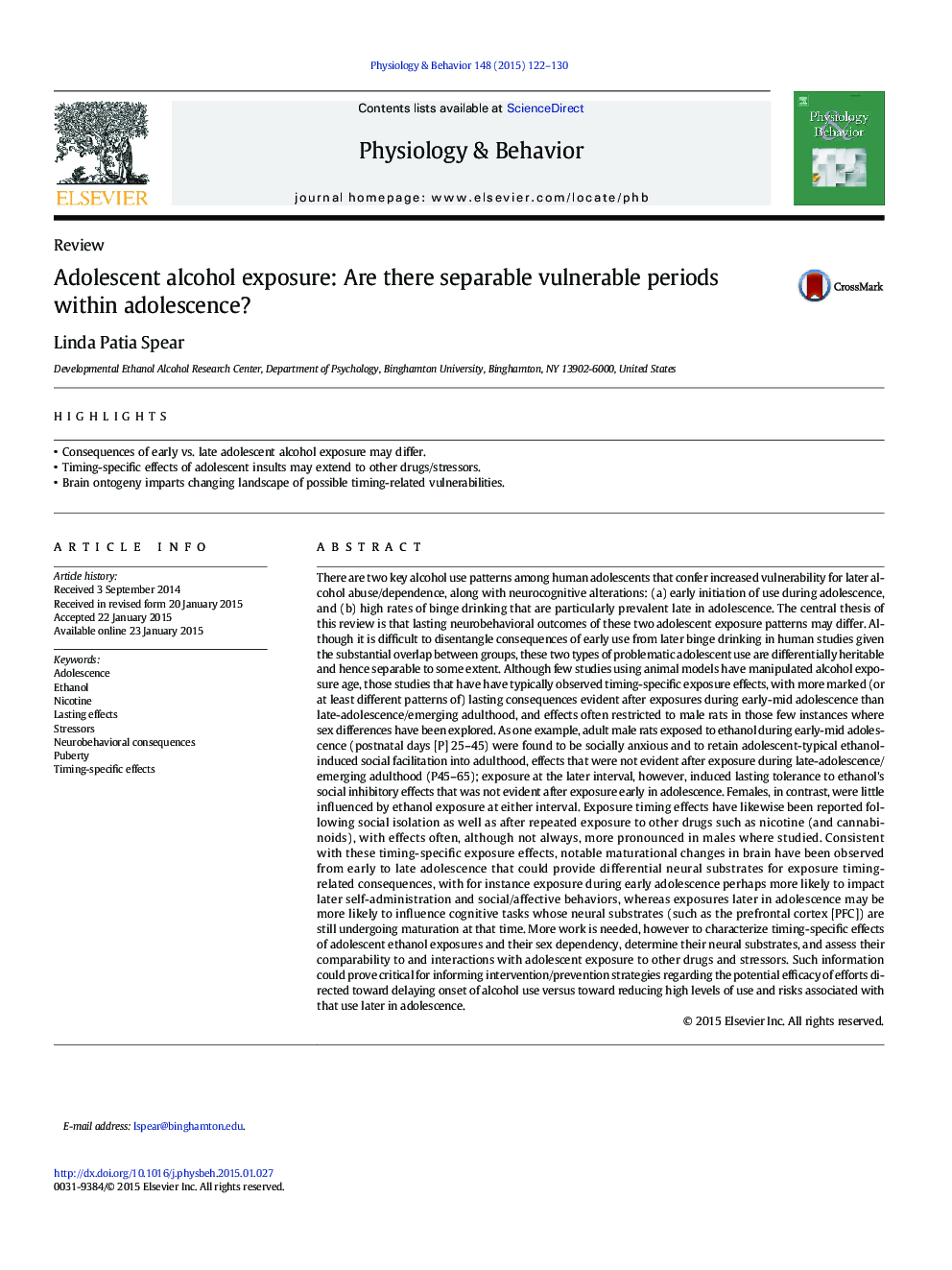| کد مقاله | کد نشریه | سال انتشار | مقاله انگلیسی | نسخه تمام متن |
|---|---|---|---|---|
| 2844101 | 1571169 | 2015 | 9 صفحه PDF | دانلود رایگان |
• Consequences of early vs. late adolescent alcohol exposure may differ.
• Timing-specific effects of adolescent insults may extend to other drugs/stressors.
• Brain ontogeny imparts changing landscape of possible timing-related vulnerabilities.
There are two key alcohol use patterns among human adolescents that confer increased vulnerability for later alcohol abuse/dependence, along with neurocognitive alterations: (a) early initiation of use during adolescence, and (b) high rates of binge drinking that are particularly prevalent late in adolescence. The central thesis of this review is that lasting neurobehavioral outcomes of these two adolescent exposure patterns may differ. Although it is difficult to disentangle consequences of early use from later binge drinking in human studies given the substantial overlap between groups, these two types of problematic adolescent use are differentially heritable and hence separable to some extent. Although few studies using animal models have manipulated alcohol exposure age, those studies that have have typically observed timing-specific exposure effects, with more marked (or at least different patterns of) lasting consequences evident after exposures during early-mid adolescence than late-adolescence/emerging adulthood, and effects often restricted to male rats in those few instances where sex differences have been explored. As one example, adult male rats exposed to ethanol during early-mid adolescence (postnatal days [P] 25–45) were found to be socially anxious and to retain adolescent-typical ethanol-induced social facilitation into adulthood, effects that were not evident after exposure during late-adolescence/emerging adulthood (P45–65); exposure at the later interval, however, induced lasting tolerance to ethanol's social inhibitory effects that was not evident after exposure early in adolescence. Females, in contrast, were little influenced by ethanol exposure at either interval. Exposure timing effects have likewise been reported following social isolation as well as after repeated exposure to other drugs such as nicotine (and cannabinoids), with effects often, although not always, more pronounced in males where studied. Consistent with these timing-specific exposure effects, notable maturational changes in brain have been observed from early to late adolescence that could provide differential neural substrates for exposure timing-related consequences, with for instance exposure during early adolescence perhaps more likely to impact later self-administration and social/affective behaviors, whereas exposures later in adolescence may be more likely to influence cognitive tasks whose neural substrates (such as the prefrontal cortex [PFC]) are still undergoing maturation at that time. More work is needed, however to characterize timing-specific effects of adolescent ethanol exposures and their sex dependency, determine their neural substrates, and assess their comparability to and interactions with adolescent exposure to other drugs and stressors. Such information could prove critical for informing intervention/prevention strategies regarding the potential efficacy of efforts directed toward delaying onset of alcohol use versus toward reducing high levels of use and risks associated with that use later in adolescence.
Journal: Physiology & Behavior - Volume 148, 1 September 2015, Pages 122–130
